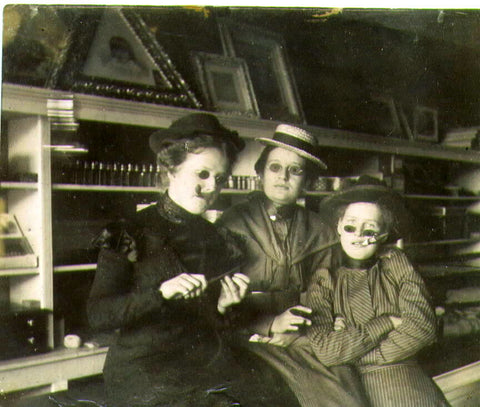
I find cigars fascinating. Because I've seen so many comfortable gentlemen smoking them in their jacket and ascots, it seemed the perfect subject for our ascot tie blog.
Here's a little of everything you need to know about cigars.
The History of the cigar
Thank god for Christopher Columbus for not only taking the credit for discovering the New World but also for introducing tobacco to Europe.
It was his crew who found the joys of smoking for the first time when they met a group of natives on Hispaniola (that island that houses Haiti and The Dominican Republic). Those friendly natives gave them smoking leaves that offered an interesting smell and a good feeling in the lungs.
Columbus's men met many natives who smoked leaves in various sizes on the island of Cuba where he made his temporary residence. These groups of leaves were wrapped up and dried--this was the birth of the cigar.
Conquer And Smoke
European conquistadors were smoking in no time, rolling up those leaves and enjoying an occasional smoke. Early cigars spread like wildfire throughout Spain, Portugal, and France where the early versions of the smokes were championed by ambassador Jean Nicot. You might recognize Jean's last name which sounds like "nicotine." This is where we get the word.
Italy picked up the smoking habit in the mid 16th century, and men in Britain put the tobacco in their pipes.
Even though Philip II of Spain and James l of England banned cigars and smoking, it didn't stop Sir Walter Raleigh from spreading the pastime throughout England. After that Tobacco became big business in America, exporting to the rest of the world via the British.
The Philippines had become a major hub for creating tobacco since the San Clemente, a Spanish ship, brought plenty of seeds in the late 1500's. The soil in the Philippines made for perfect planting for the missionaries in the area. This was the beginning of a tobacco boom in the Asian country.
Cigarettes were not a popular habit in the 19th century, even though Rudyard Kipling had written a poem about the experience of smoking them. I'm sure Rudyard enjoyed an ascot tie or two.
In those days, machines that created cigars didn't exist, so the industry grew on its human labor.
A New Cigar Standout
Key West became yet another important center for Cigar production when Vicente Martinez Ybor made the area the home of his cigar empire to escape the tragic Ten Years' War.
The company town of Ybor City grew after Ybor moved, yet again, to Tampa Florida where he built the largest cigar company in the world at the time.
Key West was later ravaged by a fire and cause much of Ybor's competition to settle in Tampa as well. Among these competitors was Ignacio Haya who had a fair relationship with Ybor.
Ybor city and Tampa became the cigar capital of the world, driven by Spanish and Cuban workers all the way until the 1920's.
New York, New York

New York became a cigar center in its own right for a time. During those cigar years, workers would roll cigars in their own homes, until the practice was banned for constitutional reasons.
The number of home workers lingered in the thousands before the ban on the practice. The ban soon went away, and all of the workers who had relocated other New York City boroughs went back to Manhattan to continue their work.
Everybody Was Doing It
Cigar businesses used to be common across the country with loads of small rollers competing for local smokers.
At the time there were over 75,000 small businesses who offered cigars. That's probably more than the number of shops selling ascots, in those days. Many of these shops were owned by families, and the idea of their cigars being rolled by machines was blasphemy.
Cigar businesses caught on like wildfire in the early 20th century--especially Cuba and Central America where small businesses called chinchales could be found in places, even outside of New York.
The chinchales mostly sold totalmente a mano, or "by hand" cigars. In modern times the handmade versus machine made cigars have built a barrier between quality cigars and drugstore cigars.
Best Cigars In The World

Cohiba: Havana Cuba
If you've heard of cigars, you've probably heard of the Cohiba. The Cohiba cigar was originally made only for Fidel Castro in Cuba. Castro gave the cigars to partners as gifts and word spread that these cigars were the best tasting in the world.
After 1982, Castro allowed the mastery of the Cohiba to be shared to others in the country and friends of the Cuban government. A derivation of the Cohiba was the Cohiba Siglo VI that celebrated the 500th anniversary of Columbus's arrival in the Caribbean.
Davidoff:
If you plan to make Cigars for a living, it helps to be sanctioned by the Cuban Government. This was Zino Davidoff's plan to heighten the value of his cigar product. Born in the early 20th century in Kiev, Russia, Davidoff made some of the tastiest and strong cigars for the public.
Don Pepin Garcia:
Some cigars makers started by mastering their craft at other companies. Such was the case for Jose "Don Pepin" Garcia who began his cigar journey under the Tutuaje label. There is a factory in El Rey de Los Habanos where Don's company now makes cigars in the Cuban style sans the Cuban tobacco.
How To Smoke A Cigar

Cutting the cigar:
The first step is to make sure that you use a true cigar cutter. We've all seen the movie where the tough guy bites off the end of the cigar. Unfortunately, that tough guy didn't get to enjoy the subtleties of the cigar because he ruined it by biting it. Only use a knife to cut off the end of the cigar, if there is no other choice.
The most important focus is to avoid cigar tearing, so you'll get experience the full taste of the cigar.
Lighting the Cigar:
When to remove that band on the cigar? Most take the band off when they first plan to smoke the cigar, but this is the wrong approach. Leave the band on the cigar to prevent the cigar from ripping, and once it's lit, you can remove the band after ten or so puffs.
After you've chosen the perfect cigar and have cut off the tip in a smooth fashion, it's time to light the cigar. Use a true cigar lighter to start. If you had to use a cigarette lighter, it's not ideal, but given a longer time under the lighter flame, the cigar will light eventually.
Matches can taint the cigar flavor, so avoid them at all costs. The last thing you need is an expensive cigar that is ruined by a match.
You may have to use a match. In this case, make sure and use a longer match which is much easier to light, due to the length of the cigar. Search for matches that don't use sulfur. Sulfur, again, will change the cigar's flavor.
Remember, don't inhale! Let the flavor fill your mouth and then return the smoke to the heavens. Make sure your other hand is holding bourbon, port wine, or scotch to truly enjoy the experience, while wearing your favorite ascot tie.
You are now a cigar genius, go out and smoke one.
